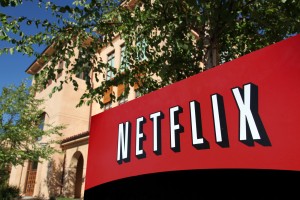
After more than 40 years of operation, DTVE is closing its doors and our website will no longer be updated daily. Thank you for all of your support.
OTT to grow massively, Netflix now “outspending BBC” on content
 Bundled and standalone OTT video subscriptions are expected to grow massively over the next five years as traditional cable TV subscriptions continue to decline, according to Ben Keen, chief analyst and VP, consumer media, IHS. However, the transition to digital and the success of cable broadband – itself a driver for OTT – mean that cable is still a strong growth industry.
Bundled and standalone OTT video subscriptions are expected to grow massively over the next five years as traditional cable TV subscriptions continue to decline, according to Ben Keen, chief analyst and VP, consumer media, IHS. However, the transition to digital and the success of cable broadband – itself a driver for OTT – mean that cable is still a strong growth industry.
Keen told Cable Congress attendees in Brussels yesterday that subscription and ad-funded OTT services are expected to grow significantly, with total online video revenues expected to surpass US$35 billion by 2018.
In Europe, IHS expects bundled OTT subscriptions to reach close to 30 million by 2019, while standalone subs are likely to add about 40 million, taking the total over 70 million.
Keen said that OTT leader Netflix is now a major investor in content, with its subscriber growth closely following that investment in content. He said about 20% of Netflix’s content spend is on original content with the balance spent on acquisitions. He said Netflix now outspends the BBC on content overall, and spends more than HBO and Discovery, with only Sky spending more, driven by its massive investment in sports rights.
Keen said Amazon is also spending significantly on content, outspending for example ProSiebenSat.1 Group.
While OTT is growing, online video revenues still only amount to US$33 billion, less than the US$273 billion spent on pay TV. Nevertheless, the cable TV business is under pressure, with TV subscribers declining from 2009. Since 2013, subscriber numbers have started declining in central and eastern Europe as well as western Europe.
Within the overall TV market, cable’s share has fallen from over 70% to just over 40% within a decade, under pressure less from OTT than from IPTV and, in central and eastern Europe in particular, from satellite.
Despite the pressure on TV, cable is still a growth industry, said Keen. “The industry has been transformed by the transition to digital,” he said. Over 70% of European cable TV revenues are now digital, said Keen, and TV ARPU has continued to go up as a result.
Broadband internet has however been the main driver for growing ARPU and growing revenue for cable. Almost half of all cable revenues are now from broadband and telephony rather than TV. Keen said that DOCSIS 3.0 is now available in most cable homes.
Overall, he said, the cable industry has almost doubled in size over the last decade, adding €12 billion in value.


